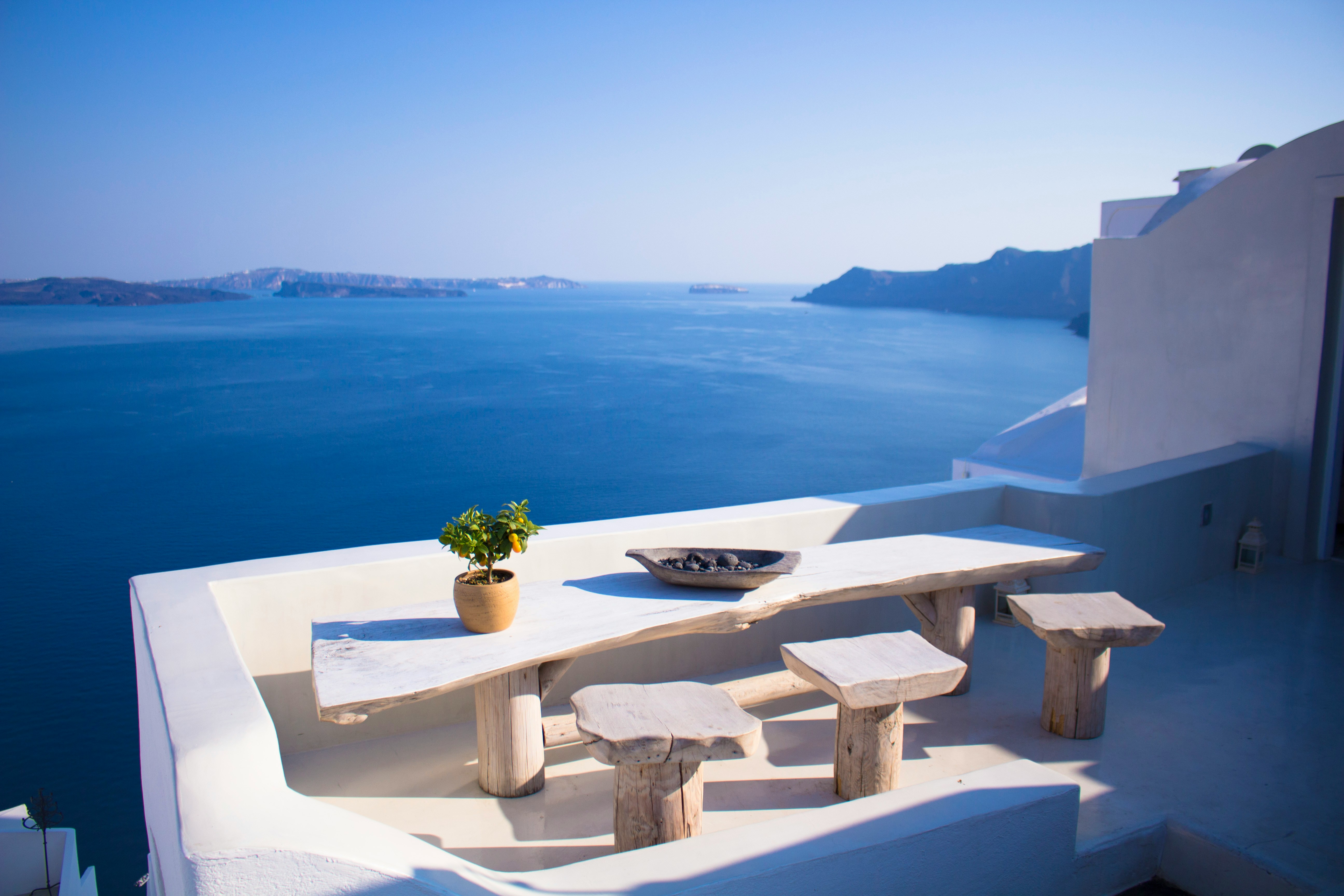Santorini, Mykonos, and Zakynthos get the photographs, but the real character of the Greek sea lies elsewhere: in quiet inlets, pebbled bays, and small fishing villages where the water is still clear enough to see the sand ripple beneath your feet.
Finding Greece’s secret beaches isn’t difficult; it just requires patience and curiosity. They’re the kind of places reached by a dirt road, a short hike, or sometimes by a local boat captain who knows every corner of the coast.
Western Greece — Ionian Calm
The Ionian coast, from the Peloponnese up to Epirus, feels different from the rest of the country. The water here is glassy, shaded blue-green by olive trees and limestone cliffs.
On the island of Kefalonia, Myrtos may be famous, but just beyond lies Petani — a smaller, quieter crescent of white stones and turquoise sea. A few tavernas sit above the beach, serving grilled sardines and fried zucchini, and in late afternoon, the cliffs turn gold. On nearby Ithaca, Filiatro Beach offers the same clarity of water with half the visitors, a place where locals come to swim before lunch and leave their sandals at the edge of the road.
Farther north, near Parga on the mainland, Lichnos and Sarakiniko beaches hide beneath olive groves. Small fishing boats anchor just offshore, and the hills behind them fill with the scent of wild thyme. These are beaches that ask for stillness rather than spectacle.
For travelers exploring this coastline slowly — whether by car, sailboat, or joining one of the Greece bike tours that follow the quiet Ionian backroads — the pleasure lies in how each turn reveals a new shade of blue.
The Peloponnese — Ancient Shores
The Peloponnese peninsula, often mistaken for an island, has some of the most secluded beaches in the country. Its long fingers stretch into three gulfs, each ending in a different mood — quiet, rugged, or utterly remote.
On the west coast near Pylos, Voidokilia is a perfect horseshoe of sand, framed by dunes and lagoons. It’s often described as the most beautiful beach in Greece, though part of its magic lies in the journey — a short drive through olive fields and then a walk through warm, shallow water. The nearby ruins of Nestor’s Palace remind you how long people have been drawn to this coast.
In the Mani region, the beaches feel elemental. Vathia and Gerolimenas are ringed by stone towers that once guarded against pirates; today, they face only the open sea. The pebble beach of Limeni, with its deep blue water, sits at the edge of one of Greece’s most atmospheric villages, where locals swim at sunset while the tavern terraces glow in the fading light.
On the eastern coast, between Leonidio and Kyparissi, hidden coves appear where the mountains fall sharply into the sea. The roads wind through chestnut forests and tiny hamlets, and when they open, you find an empty strip of beach waiting below.
The Dodecanese — Islands of Quiet Harmony
Further southeast, the Dodecanese islands are strung like beads between Greece and Turkey, each with its own shape and accent. Some are known — Rhodes, Kos — but the smaller ones hold the real treasures.
On Symi, most beaches are reachable only by boat. Agios Georgios Bay, a dramatic slice of sea under 300-meter cliffs, has no facilities, no road — just a feeling of being entirely removed from the modern world.
In nearby Halki, Pondamos Beach lies within walking distance of the main town but rarely feels crowded. Its shallow water glows like glass, and the cafés serve homemade lemonade under whitewashed arches. Nisyros, a volcanic island, hides black-sand coves like Pali and Pachia Ammos, where you can swim surrounded by cliffs the color of ash.
Each island has its own rhythm — ferry schedules and tides dictating time more than clocks.
Crete — South-Facing Solitude
Even Greece’s largest island has beaches that remain quiet. Crete’s north coast is developed, but the south, facing Africa, still feels wild and untouched.
Elafonissi, with its pink sand and lagoon-like shallows, draws crowds, yet just a few kilometers away Kedrodasos hides behind dunes of juniper and cedar. The water is clear, the air dry and scented, and you can still find a corner to yourself.
Further east, the beaches of the Libyan Sea — Agios Pavlos, Lentas, and Xerokambos — require effort to reach, but reward you with silence. The cliffs are raw, the sea deep blue, and the sense of distance complete.
Crete’s diversity means that a single drive can take you from mountains to palm groves to coast. The further south you go, the more the island feels like its own continent.
The North Aegean — Wild and Unexpected
Few travelers reach the northern Aegean islands, but those who do discover a different Greece — greener, quieter, more introspective.
On Ikaria, known for its slow pace and long-lived residents, Seychelles Beach lies at the end of a rocky path. The walk takes fifteen minutes, but the view — white boulders, turquoise water, and nothing manmade in sight — justifies every step. Locals say the name fits: it feels like a secret paradise misplaced in the Aegean.
In Thassos, Saliara Beach, also called Marble Beach, glows white from crushed stone dust, and the sea shines with unreal color. Nearby, smaller coves have no names at all — just paths down from the pine trees and the sound of cicadas.
These are beaches that don’t announce themselves. You find them by following a local’s gesture, a handwritten sign, or the glimmer of the sea through trees.
What the Hidden Shores Reveal
Greece’s lesser-known beaches share a quiet confidence. They don’t compete for attention or appear on every postcard. Instead, they remind you what the coast looked like before tourism shaped it — small fishing harbors, goat tracks, and tavernas where the menu changes depending on the morning’s catch.
To find them is to rediscover the slower rhythm that defines Greek life. The pace of conversation matches the sea, and the sea itself changes shade by the minute.
For travelers willing to go beyond the well-known, Greece still holds entire coastlines of silence and simplicity — places where the only sound is the water folding gently onto the shore.







Click here to change your cookie preferences